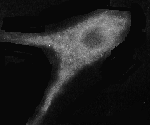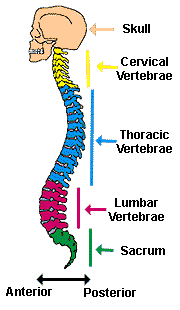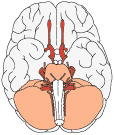 Brain Facts and Figures
Brain Facts and Figures Brain Facts and Figures
Brain Facts and Figures
| Table of Contents | |||
BRAIN |
NEURON |
SPINAL CORD |
 |
SENSORY APPARATUS |
BLOOD SUPPLY | ||
| Average Brain Weights (in grams) | ||||
| Species | Weight (g) | Species | Weight (g) | |
| adult human | 1,300 - 1,400 | newborn human | 350 - 400 | |
| sperm whale | 7,800 | fin whale | 6,930 | |
| elephant | 4,783 | humpback whale | 4,675 | |
| gray whale | 4,317 | killer whale | 5,620 | bowhead whale | 2,738 | pilot whale | 2,670 |
| bottle-nosed dolphin | 1,500 - 1,600 | walrus | 1,020 - 1,126 | |
| Pithecanthropus Man | 850 - 1,000 | camel | 762 | |
| giraffe | 680 | hippopotamus | 582 | |
| leopard seal | 542 | horse | 532 | |
| polar bear | 498 | gorilla | 465 - 540 | |
| cow | 425-458 | chimpanzee | 420 | |
| orangutan | 370 | California sea lion | 363 | |
| manatee | 360 | tiger | 263.5 | |
| lion | 240 | grizzly bear | 234 | |
| pig | 180 | jaguar | 157 | |
| sheep | 140 | baboon | 137 | |
| rhesus monkey | 90-97 | dog (beagle) | 72 | |
| aardvark | 72 | beaver | 45 | |
| shark (great white) | 34 | shark (nurse) | 32 | |
| cat | 30 | porcupine | 25 | |
| squirrel monkey | 22 | marmot | 17 | |
| rabbit | 10-13 | platypus | 9 | |
| alligator | 8.4 | squirrel | 7.6 | |
| opossum | 6 | flying lemur | 6 | |
| fairy anteater | 4.4 | guinea pig | 4 | |
| ring-necked pheasant | 4.0 | hedgehog | 3.35 | |
| tree shrew | 3 | fairy armadillo | 2.5 | |
| owl | 2.2 | grey partridge | 1.9 | |
| rat (400 g body weight) | 2 | hamster | 1.4 | |
| elephant shrew | 1.3 | house sparrow | 1.0 | |
| european quail | 0.9 | turtle | 0.3-0.7 | |
| bull frog | 0.24 | viper | 0.1 | |
| goldfish | 0.097 | green lizard | 0.08 | |
Reference for many of these brain weights:
| ||||
Intracranial contents by volume (1,700 ml, 100%): brain = 1,400 ml (80%); blood = 150 ml (10%); cerebrospinal fluid = 150 ml (10%) (from Rengachary, S.S. and Ellenbogen, R.G., editors, Principles of Neurosurgery, Edinburgh: Elsevier Mosby, 2005)
Average number of neurons in the brain = 86 billion (Frederico
Azevedo et al., Equal numbers of neuronal and nonneuronal cells
make the human brain an isometrically scaled-up primate brain. J. Comp.
Neurol., 513: 532-541, 2009.)
The octopus nervous system has about 500,000,000 neurons, with two-thirds
of these neurons located in the arms of the octopus. (Hochner, B. et al., The octopus: a model for a comparative analysis of the
evolution of learning and memory mechanisms, Biol Bull., 210:308-317, 2006.)
Number of neurons in honey bee brain = 950,000 (from Menzel, R. and Giurfa, M., Cognitive architecture
of a mini-brain: the honeybee, Trd. Cog. Sci., 5:62-71, 2001.)
Number of neurons in Aplysia nervous system = 18,000-20,000
Number of neurons in each segmental ganglia in the leech = 350
Volume of the brain of a locust = 6mm3 (from
The Neurobiology of the Insect Brain, Burrows, M., 1996)
Ratio of the volume of grey matter to white matter in the cerebral
hemipheres (20 yrs. old) = 1.3 (Miller, A.K., Alston,
R.L. and Corsellis, J.A., Variation with age in the volumes of grey and
white matter in the cerebral hemispheres of man: measurements with an
image analyser, Neuropathol Appl Neurobiol., 6:119-132,
1980)
Ratio of the volume of grey matter to white matter in the cerebral
hemipheres (50 yrs. old) = 1.1 (Miller et al., 1980)
Ratio of the volume of grey matter to white matter in the cerebral
hemipheres (100 yrs. old) = 1.5 (Miller et al., 1980)
% of cerebral oxygen consumption by white matter = 6%
% of cerebral oxygen consumption by gray matter = 94%
Ratio of glial cells to neurons in the brain = 1:1 Reference)
(For more information about the number of neurons in the brain, see R.W. Williams and K. Herrup, Ann. Review Neuroscience, 11:423-453, 1988)
Number of neocortical neurons (females) = 19.3 billion (Pakkenberg, B. et al., Aging and the human neocortex, Exp. Gerontology,
38:95-99, 2003 and Pakkenberg, B. and Gundersen, H.J.G.
Neocortical neuron number in humans: effect of sex and age. J. Comp.
Neurology, 384:312-320, 1997.)
Number of neocortical neurons (males) = 22.8 billion (Pakkenberg et al.,
1997; 2003)
Average loss of neocortical neurons = 85,000 per day (~31 million per
year) (Pakkenberg et al., 1997; 2003)
Average loss of neocortical neurons = 1 per second (Pakkenberg et al.,
1997; 2003)
Average number of neocortical glial cells (young adults ) = 39 billion
(Pakkenberg et al., 1997; 2003)
Average number of neocortical glial cells (older adults) =36 billion
(Pakkenberg et al., 1997; 2003)
Number of neurons in cerebral cortex (rat) = 21 million (Korbo, L., et
al., J. Neurosci Methods, 31:93-100, 1990)
Length of myelinated nerve fibers in brain = 150,000-180,000 km
(Pakkenberg et al., 1997; 2003)
Number of synapses in cortex = 0.15 quadrillion (Pakkenberg et al.,
1997; 2003)
Difference number of neurons in the right and left hemispheres = 186
million MORE neurons on left side than right side (Pakkenberg et al.,
1997; 2003)
| Proportion by Volume (%) | ||
| Rat | Human | |
| Cerebral Cortex | 31 | 77 |
| Diencephalon | 7 | 4 |
| Midbrain | 6 | 4 |
| Hindbrain | 7 | 2 |
| Cerebellum | 10 | 10 |
| Spinal Cord | 35 | 2 |
| (Reference: Trends in Neurosciences, 18:471-474, 1995) | ||
| Composition of Brain and Muscle | ||
| Skeletal Muscle (%) | Whole Brain (%) | |
| Water | 75 | 77 to 78 |
| Lipids | 5 | 10 to 12 |
| Protein | 18 to 20 | 8 |
| Carbohydrate | 1 | 1 |
| Soluble organic substances | 3 to 5 | 2 |
| Inorganic salts | 1 | 1 |
| (Reference: McIlwain, H. and Bachelard, H.S., Biochemistry and the Central Nervous System, Edinburgh: Churchill Livingstone, 1985) | ||
Total surface area of the cerebral cortex = 2,500 cm2 (2.5 ft2; A. Peters, and E.G. Jones, Cerebral Cortex, 1984)
Total surface area of the cerebral cortex (lesser shrew) = 0.8
cm2
Total surface area of the cerebral cortex (rat) = 6 cm2
Total surface area of the cerebral cortex (cat) = 83 cm2
Total surface area of the cerebral cortex (African elephant) = 6,300
cm2
Total surface area of the cerebral cortex (Bottlenosed dolphin) =
3,745 cm2 (S.H. Ridgway, The Cetacean
Central Nervous System, p. 221)
Total surface area of the cerebral cortex (pilot whale) = 5,800
cm2
Total surface area of the cerebral cortex (false killer whale) = 7,400
cm2
(Reference for surface area figures: Nieuwenhuys,
R., Ten Donkelaar, H.J. and Nicholson, C., The Central nervous System
of Vertebrates, Vol. 3, Berlin: Springer, 1998)
Total number of neurons in cerebral cortex = 10 billion (from G.M. Shepherd, The Synaptic Organization of the
Brain, 1998, p. 6). However, C. Koch lists the total number of
neurons in the cerebral cortex at 20 billion (Biophysics of
Computation. Information Processing in Single Neurons, New York: Oxford Univ.
Press, 1999, page 87).
Total number of synapses in cerebral cortex = 60 trillion (yes, trillion)
(from G.M. Shepherd, The Synaptic Organization of the
Brain, 1998, p. 6). However, C. Koch lists the total synapses in the
cerebral cortex at 240 trillion (Biophysics of Computation.
Information Processing in Single Neurons, New York: Oxford Univ.
Press, 1999, page 87).
Percentage of total cerebral cortex volume (human): frontal lobe = 41%; temporal lobe = 22%; parietal lobe = 19%; occipital lobe = 18%. (Kennedy et al., Cerebral Cortex, 8:372-384, 1998.)
Number of cortical layers = 6
Thickness of cerebral cortex =
1.5-4.5 mm
Thickness of cerebral cortex (Bottlenosed dolphin) =
1.3-1.8 mm (S.H. Ridgway, The Cetacean Central Nervous
System, p. 221)
EEG - beta wave frequency = 13 to 30 Hz
EEG - alpha wave frequency = 8 to 13 Hz
EEG - theta wave frequency = 4 to 7 Hz
EEG - delta wave frequency = 0.5 to 4 Hz
World record, time without sleep = 264 hours (11 days) by Randy Gardner in
1965. Note: In Biopsychology (by J.P.J. Pinel, Boston: Allyn and
Bacon, 2000, p. 322), the record for time awake is attributed to Mrs.
Maureen Weston. She apparently spent 449 hours [18 days, 17 hours] awake
in a rocking chair. The Guinness Book of World Records
[1990] has the record belonging to Robert McDonald who spent
453 hours, 40 min in a rocking chair.
Time until unconsciousness after loss of blood supply to brain = 8-10 sec
Time until reflex loss after loss of blood supply to brain = 40-110 sec
Rate of neuron growth (early pregnancy) = 250,000 neurons/minute
Length of spiny terminals of a Purkinje cell = 40,700 micron
Number spines on a Purkinje cell dendritic branchlet = 61,000
Surface area of cerebellar cortex = 1,590 cm2 (from Sereno et al., The human cerebellum has almost 80% of the surface area of the neocortex, PNAS, 117:19538-19543, 2020
Weight of adult cerebellum = 150 grams (Afifi, A.K.
and Bergman, R.A., Functional Neuroanatomy, New York:
McGraw-Hill, 1998)
Number of Purkinje cells = 15-26 million
Number of synapses made on a Purkinje cell = up to 200,000
Weight of hypothalamus = 4 g
Volume of suprachiasmatic nucleus = 0.3 mm3
Number of fibers in pyramidal tract above decussation = 1,100,000
Number of fibers in corpus callosum = 200,000,000 (Lunders, E., Thompson, P.M. and Toga, A.W., The Development of
the Corpus Callosum in the Healthy Human Brain, The Journal of
Neuroscience, 30:10985-10990, 2010.)
Area of the corpus callosum (midsagittal section) = 6.2 cm2
| Species | Cerebellum Weight (grams) | Body Weight (grams) |
| Mouse | 0.09 | 58 |
| Bat | 0.09 | 30 |
| Flying Fox | 0.3 | 130 |
| Pigeon | 0.4 | 500 |
| Guinea Pig | 0.9 | 485 |
| Squirrel | 1.5 | 350 |
| Chinchilla | 1.7 | 500 |
| Rabbit | 1.9 | 1,800 |
| Hare | 2.3 | 3,000 |
| Cat | 5.3 | 3,500 |
| Dog | 6.0 | 3,500 |
| Macaque | 7.8 | 6,000 |
| Sheep | 21.5 | 25,000 |
| Bovine | 35.7 | 300,000 |
| Human | 142 | 60,000 |
| Sultan, F. and Braitenberg, V. Shapes and sizes of different mammalian cerebella. A study in quantitative comparative neuroanatomy. J. Hirnforsch., 34:79-92, 1993. | ||
Total volume of cerebrospinal fluid (adult) = 125-150 ml
Total volume of cerebrospinal fluid (infant) = 50 ml (Aghababian, R., Essentials of Emergency
Medicine, 2006)
Turnover of entire volume of cerebrospinal fluid = 3 to 4 times per
day (from Kandel et al., 2000, p. 1296)
Rate of production of CSF = 0.35 ml/min (500 ml/day) (from Kandel et al., 2000, p. 1296)
pH of cerebrospinal fluid = 7.33 (from Kandel et al., 2000, p. 1296)
Specific gravity of cerebrospinal fluid = 1.007
Color of normal CSF = clear and colorless
White blood cell count in CSF = 0-3 per mm3
Red blood cell count in CSF = 0-5 per mm3
Normal intracranial pressure = 150 - 180 mm of water
| Composition of Serum and Cerebrospinal Fluid (CSF) | ||
| CSF | Serum | |
| Water (%) | 99 | 93 |
| Protein (mg/dl) | 35 | 7000 |
| Glucose (mg/dl) | 60 | 90 |
| Osmolarity (mOsm/l) | 295 | 295 |
| Na (meq/l) | 138 | 138 |
| K (meq/l) | 2.8 | 4.5 |
| Ca (meq/l) | 2.1 | 4.8 |
| Mg (meq/l) | 0.3 | 1.7 |
| Cl (meq/l) | 119 | 102 |
| pH | 7.33 | 7.41 |
| (Reference: Fishman, R.A. Cerebrospinal Fluid in Disease of the Nervous System. Philadelphia: Saunders, 1980) | ||
 Number of cranial nerves = 12
Number of cranial nerves = 12
I- olfactory
II- optic
Number of fibers in human optic nerve = 1,200,000III- oculomotor
Number of fibers in cat optic nerve = 119,000
Number of fibers in albino rat optic nerve = 74,800
Length of optic nerve = 50 mm (Reference: Kanski, J.J., Clinical Ophthalmology, 6th ed., Edinburgh: Elsevier, 2007.)
Number of fibers in oculomotor nerve = 25,000-35,000IV- trochlear
Number of fibers in trochlear nerve = 2,000-3,500V- trigeminal
Number of neurons in nucleus of the trochlear nerve = 2,000-3,500
Number of fibers in motor root of trigeminal nerve = 8,100VI- abducens
Number of fibers in sensory root of trigeminal nerve = 140,000
Number of fibers in abducens nerve (at exit from brain stem) = 3,700VII- facial
Number of fibers in facial nerve (at exit from brain stem) = 9,000-10,000VIII-vestibulocochlear
Length of nucleus of the facial nerve = 2 to 5.6 mm
Number of neurons in nucleus of the facial nerve = 7,000
Length of dorsal motor nucleus of the vagus nerve = 10 mmXI- spinal accessory
Number of neurons in nucleus of the hypoglossal nerve = 4,500-7,500
Length of nucleus of the hypoglossal nerve = 10 mm
 Spinal Cord
Spinal Cord
Number of neurons in human spinal cord = 1 billion (from Kalat, J.W.,
Biological Psychology, 6th Edition, 1998, page 24)
Length of human spinal cord = 45 cm (male); 43 cm (female)
Length of human vertebral column (male) = 71 cm
Length of human vertebral column (female) = 61 cm
Length of cat spinal cord = 34 cm
Length of rabbit spinal cord = 18 cm
Length of the filum terminale = 15 cm
Cross sectional area of the spinal cord (C2 level) = 110
mm2
Cross sectional area of the spinal cord (C4 level) = 122
mm2
Cross sectional area of the spinal cord (C5 level) = 78
mm2
Cross sectional area of the spinal cord (C7 level) = 85 mm2
(Reference: Watson, C., Paxinos, G. and Kayalioglu, G., The Spinal
Cord, Amsterdam: Elsevier, 2009)
Weight of human spinal cord = 35 g
Weight of rabbit spinal cord = 4 g
Weight of rat spinal cord (400 g body weight) = 0.7 g
Maximal circumference of cervical enlargement = 38 mm
Maximal circumference of lumbar enlargement = 35 mm
Pairs of Spinal Nerves = 31
Number of spinal cord segments (human)= 31
8 cervical segmentsNumber of Spinal Cord segments (rat)= 34
12 thoracic segments
5 lumbar segments
5 sacral segments
1 coccygeal segment
8 cervical segments
13 thoracic segments
6 lumbar segments
4 sacral segments
3 coccygeal segments
 Sensory Apparatus
Sensory Apparatus
Diameter of external auditory meatus (ear canal)= 0.7 cm
Weight of malleus = 23 mg; length of malleus = 8-9 mm
Weight of incus = 30 mg; dimensions of incus = 5 mm by 7 mm
Weight of stapes = 3-4 mg; dimensions of stapes = 3.5 mm high, 3 mm
long, 1.4 mm wide
Malleus, incus and stapes references: Gelfand, S.A.
Hearing: An Introduction to Psychological and Physiological
Acoustics, 4th edition, New York: Marcel Dekker, 2004.
Length of cochlea = 35 mm
Width of cochlea = 10 mm
Number of turns in the cochlea = 2.2-2.9
Length of basilar membrane = 25-35 mm
Width of basilar membrane = 150 microns (at base of cochlea)
(Hearing. Its Physiology and Pathophysiology, A.R. Moller, San
Diego, Academic Press, 2000.)
Auditory Pain Threshold = 130 db
Threshold for hearing damage = 90 db for an extended period of time
| Decibel Sound Scale | |
| Decibels | Sound |
| 180 | Rocket launching pad |
| 140 | Jet plane |
| 140 | Gunshot blast |
| 120 | Automobile horn |
| 130 | Pain threshold |
| 120 | Discomfort |
| 90 | Subway |
| 80 | Noisy Restaurant |
| 75 | Busy traffic |
| 66 | Normal conversation |
| 50 | Average home |
| 30 | Soft whisper |
| Source: Lee, K.J., Essential Otolaryngology, 8th edition, New York: McGraw-Hill, 2003. | |
 Neurons
Neurons
Mass of a large sensory neuron = 10-6gram (from Groves and Rebec, Introduction to Biological Psychology,
3rd edition, Dubuque: Wm.C. Brown Publ., 1988)
Number of synapses for a "typical" neuron = 1,000 to 10,000
Diameter of neuron = 4 micron (granule cell) to 100 micron (motor
neuron in cord)
Diameter of neuron nucleus = 3 to 18 micron
Length of Giraffe primary afferent axon (from toe to neck) = 15 feet
Resting potential of squid giant axon = -70 mV
Conduction velocity of action potential = 0.6-120 m/s (1.2-250
miles/hr)
Single sodium pump maximum transport rate = 200 Na ions/sec; 130 K
ions/sec
Typical number of sodium pumps = 1000 pumps/micron2 of membrane
surface (from Willis and Grossman, Medical
Neurobiology, Mosby, St. Louis, 1981, p. 36)
Total number of sodium pumps for a small neuron = 1 million
Density of sodium channels (squid giant axon) = 300 per micron2
(from Hille, B., Ionic Channels of Excitable
Membranes, Sinauer, Sunderland, 1984, p. 210.)
Number of voltage-gated sodium channels at each node = 1,000 to 2,000 per
micron2 (from Nolte, J., The Human
Brain, Mosby,
1999, p. 163.)
Number of voltage-gated sodium channels between nodes = 25 per
micron2
(from Nolte, J., The Human Brain, Mosby,
1999, p. 163.)
Number of voltage-gated sodium channels in unmyelinated axon = 100 to 200
per micron2 (from Nolte, J., The Human
Brain, Mosby, 1999, p. 163.)
Diameter of ion channel = 0.5 nanometer (Breedlove et al.,
Biological Psychology, 2007)
Diameter of microtubule = 20-25 nanometer
Diameter of microfilament = 5 nanometer
Diameter of neurofilament = 7-10 nanometer
Thickness of neuronal membrane = 5 nanometer (Breedlove et al.,
Biological Psychology, 2007)
Diameter of a squid giant axon = 1 mm
Thickness of squid giant axon membrane = 50-100 A
Membrane surface area of a typical neuron = 250,000 um2 (Bear
et al., 2001)
Membrane surface area of 100 billion neurons = 25,000 m2, the
size of four soccer fields (Bear, M.F.,
Connors, B.W. and Pradiso, M.A., Neuroscience: Exploring the Brain, 2nd
edition, Baltimore: Lippincott Williams and Wilkins, 2001, p. 97)
Typical synaptic cleft distance = 20-40 nanometers across (from Kandel et al., 2000, p. 176)
% neurons stained by the Golgi method = 5%
Slow axoplasmic transport rate = 0.2-4 mm/day (actin, tubulin)
Intermediate axoplasmic transport rate = 15-50 mm/day (mitochondrial
protein)
Fast axoplasmic transport rate = 200-400 mm/day (peptides,
glyolipids)
Number of molecules of neurotransmitter in one synaptic vesicle =
5,000 (from Kandel et al., 2000, p. 277)
Diameter of synaptic vesicle = 50 nanometer (small); 70-200 nanometer
(large)
Internodal Length = 150 - 1500 microns (depends on fiber diameter)
% composition of myelin = 70-80% lipid; 20-30% protein
====================================
| Ion Concentration (mM) - SQUID NEURON | ||
| Intracellular | Extracellular | |
| Potassium | 400 | 20 |
| Sodium | 50 | 440 |
| Chloride | 40-150 | 560 |
| Calcium | 0.0001 | 10 |
| Ion Concentration (mM) - MAMMALIAN NEURON | ||
| Intracellular | Extracellular | |
| Potassium | 140 | 5 |
| Sodium | 5-15 | 145 |
| Chloride | 4-30 | 110 |
| Calcium | 0.0001 | 1-2 |
| Data from Purves et al., Neuroscience, Sunderland: Sinauer Associates, 1997. | ||
====================================
% brain utilization of total resting oxygen = 20%
% blood flow from heart to brain = 15-20% (Kandel et
al., 2000)
Blood flow through whole brain (adult) = 750-1000 ml/min
Blood flow through whole brain (adult) = 54 ml/100 g/min
Blood flow through whole brain (child) = 105 ml/100 g/min
Cerebral blood flow = 55 to 60 ml/100 g brain tissue/min
Cerebral blood flow (gray matter) = 75 ml/100 g brain tissue/min
Cerebral blood flow (white matter) = 45 ml/100 g brain tissue/min (Rengachary, S.S. and Ellenbogen, R.G., editors, Principles of
Neurosurgery, Edinburgh: Elsevier Mosby, 2005)
Oxygen consumption whole brain = 46 cm3/min
Oxygen consumption whole brain = 3.3 ml/100 g/min
Blood flow rate through each carotid artery = 350 ml/min (Kandel et al., Principles of Neural Science, New York: McGraw
Hill, 2000)
Blood flow rate through basilar artery = 100-200 ml/min (Kandel et al., 2000)
Diameter of vertebral artery = 2-3 mm
Diameter of common carotid artery (adult) = 6 mm
Diameter of common carotid artery (newborn) = 2.5 mm
The total length of capillaries in the human brain = ~400 miles (Cipolla, M.J., The Cerebral Circulation, San Rafael (CA:
Morgan & Claypool Life Sciences, 2009.)